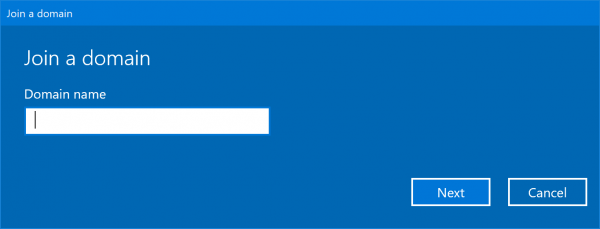
- #Windows server rejoin domain how to#
- #Windows server rejoin domain full#
- #Windows server rejoin domain password#
Reset-ComputerMachinePassword -Server dc-hostname.domain Bookmark the. Test-ComputerSecureChannel -Repair -Credential (get-credential) On a Mac, go to Directory Utility > Services and select Active Directory > to add the domain information. You will need administrator access on the computer and an account with proper permissions on the domain. Run the following command from an elevated command prompt: In Windows, join a domain in System Properties (sysdm.cpl) > Change > Domain. Netdom.exe resetpwd /s:dc-hostname.domain /ud:domainadminusername /pd:* (enter domain administrator password when prompted)Ģ. It’s a part of free Remote Server Administration Tools for Windows 7 or Remote Server Administration Tools for Windows 10.
#Windows server rejoin domain password#
Instead of rejoining domain one can change computer’s password using netdom.exe tool. It works, but it’s time consuming as it requires two reboots. The recommended by Microsoft fix is to rejoin the domain to restore the trust relationship or remove the computer object and recreate it without a password and rejoin domain. The main cause seems to be network connectivity problems between the client/server comptuers and the domain controllers.

There’s mismatch between machine’s private secret value stored locally and in the domain controller. The aforesaid error means that the computer can no longer communicate securely with its Active Directory domain. When you unjoin a device, the AD account will get removed from the device upon the next restart, and the user can no longer access their AD account.Reset computer password to fix: the trust relationship between this workstation and the primary domain failed” error The problem Upon restarting the device after policy association, the user will be able to access the AD account using their Active Directory credentials. The user account and configuration should be there unless theres something else going on. When you join a device with an Active Directory Domain, the corresponding user account will be automatically created on the user’s device. Remove client from domain, rename client, rejoin domain. In theory, you should only need to run the Management Server Configuration Wizard if the SEPMs are using Windows authentication for access to the DB, and that. To unjoin AD Domain on Windows devices remotely,

#Windows server rejoin domain how to#
How to remotely Unjoin AD Domain on Windows devices? Domain/Workgroup – The name of the domain or workgroup to which the device has been added.


Restart Device – Force the device to restart to apply the changes immediately.Password – Enter the password of the corresponding user’s AD login credentials.Username – Enter the username of the corresponding user’s AD login credentials.
#Windows server rejoin domain full#


 0 kommentar(er)
0 kommentar(er)
